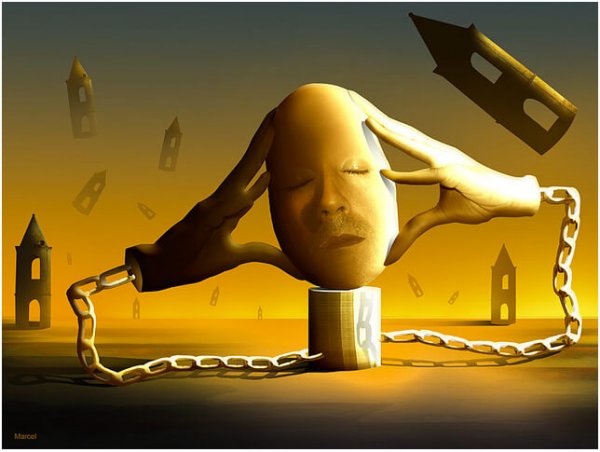Déjà vu: How Can I Know This Place if I’ve Never Been Here Before?

It’s not completely certain that paramnesia and what’s known as déjà vu are the same thing, although we often use them as synonyms because the latter is very common. In fact, there are two forms of paramnesia: that of memory and that of recognition. Déjà vu is a concrete type of recognition paramnesia.
When one experiences recognition paramnesia (also related to cryptomnesia), what one truly experiences is an alteration or distortion of reality. This includes déjà vu, jamais vu, déjà senti, etc.
Déjà vu: I’ve experienced this before
The phenomenon of déjà vu is the sensation that you’ve already had this experience or lived through this situation before. In fact, the term, which comes from French, means “already seen.” The experience makes us truly believe a perception that isn’t real, because the situation is completely new.

“-You don’t have to do it.
-What if I already did?”-Cambiando el pasado (Changing the Past, movie)-
Why does déjà vu occur?
Between the end of the 19th and beginning of the 20th century, psychoanalysis was one of the first psychological trends that tried to explain this mental phenomenon. In fact, Sigmund Freud and Carl Jung contributed their own explanations of déjà vu to the discussion: the former attributed it to repressed desires, and the latter to alterations of the collective unconscious.
However, today studies have turned towards cognitive processes in the human brain and anomalies of memory to explain this phenomenon.
- Neurological theory: An electric shock is produced in the hippocampus or in the medial temporal lobe that causes the phenomenon to happen, which would explain why people with epilepsy have it before an attack.
- Psychoanalyst theory: the subconscious activates something that the person has imagined in the past, like a dream, or something they’ve seen somewhere before, like a place in a movie.
- Double process theory: memory consists of two systems, and when déjà vu happens they desynchronize. In this case, only the familiarity system would be activated, but not the information recall one.
- Holographic theory: the memories that we have are deposited into so-called holograms. Déjà vu occurs when the memory turns to them and forms a scene from one recovered detail.
“We are our memory, we are that chimerical museum of inconstant forms, that pile of broken mirrors.”
-Jorge Luís Borges-

Types of déjà vu
As we’ve seen, paramnesia of the déjà vu type is very linked to memory. These “unusual memories” can be experienced by all of us, although experts say that it occurs more often in young people between ages 15 and 25.
- Déjà vécu: most of the déjà vu that we’ll experience in our lives is of this type. It’s the kind that we described above, feeling like you’ve experienced something before without being certain.
- Jamais vu: In English, it means “never seen.” This is the opposite of déjà vu, as it occurs when we feel uncomfortable in an experience that we don’t remember having had before.
- Déjà senti: In English, “already felt.” This happens especially to people with epilepsy who suffer from damage to the temporal lobe. They experience a false recognition of sensations that they think they’ve felt before.
“The whole visible universe is but a storehouse of images and signs to which the imagination will give a relative place and value.”
-Charles Baudelaire-
- Déjà visité: this involves having memories that seem true about the place you’re in but have never been before. You seem to remember specific details of the place without having seen it before.
- Déjà èprouvé: “I’ve already experienced this.” This is like experiencing various types of paramnesia at the same time. The person feels like the entire experience (images, smells, sounds, etc) is completely familiar.
This text is provided for informational purposes only and does not replace consultation with a professional. If in doubt, consult your specialist.








